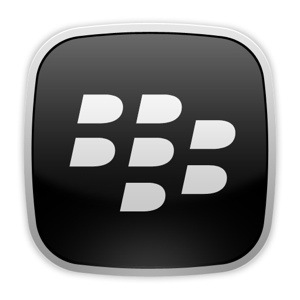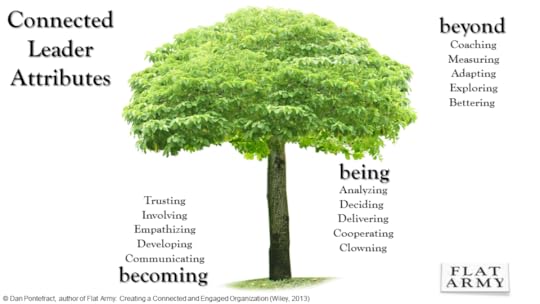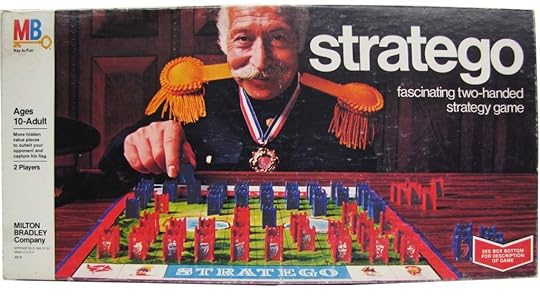Dan Pontefract's Blog, page 46
October 2, 2013
Clowning Around – An Important Leadership Attribute
 On average, Americans aged between 25 and 54 spend 26 percent of their time working, 33 percent of their time sleeping and the rest—roughly 41 percent of their time—doing anything but sleeping or working. This is according to the U.S. Bureau of Labor Statistics. By comparison, the Organisation for Economic Co-operation and Development (OECD) estimates in their Better-Life Index that member countries spanning the globe spend on average 20 percent of their time working and the rest on leisure, sleeping, personal care, etc.13 So, depending on where you live and how researchers arrive at the data points, workers are spending somewhere between one-fifth and one-quarter of their total available time working and earning a wage to help fund those leisurely activities, life-long planning, trips to Old Trafford to watch Manchester United and so on.
On average, Americans aged between 25 and 54 spend 26 percent of their time working, 33 percent of their time sleeping and the rest—roughly 41 percent of their time—doing anything but sleeping or working. This is according to the U.S. Bureau of Labor Statistics. By comparison, the Organisation for Economic Co-operation and Development (OECD) estimates in their Better-Life Index that member countries spanning the globe spend on average 20 percent of their time working and the rest on leisure, sleeping, personal care, etc.13 So, depending on where you live and how researchers arrive at the data points, workers are spending somewhere between one-fifth and one-quarter of their total available time working and earning a wage to help fund those leisurely activities, life-long planning, trips to Old Trafford to watch Manchester United and so on.
But when you cut the data a little differently and focus on total available waking time versus total time, it looks somewhat different. Based on the U.S. Bureau of Labor Statistics data, 33 percent of time is spent sleeping. Each year, we all get 8,760 hours to use as we see fi t. If 33 percent of the time is spent sleeping, it leaves us with 5,869 available waking hours. Americans work on average 2,278 hours per annum, which now correlates to a hair shy of 40 percent of waking time being spent on work. Said differently, Americans spend 60 percent of their waking hours with family and leisure, household or other activities while 40 percent is spent with work colleagues, wherever that employment takes place.
Now that we’re looking at data that suggests 40 percent of our waking hours are spent with work colleagues, don’t you think leaders should be spending a portion of their time clowning around? I do—it’s an important part of being a connected leader. In a world of quarterly targets, profit margin quests and cost constraints, a little levity can go a long way.
How to be clowning:
Business is serious but you don’t have to be all the time; ease up and smile for starters.
Lighten the mood; encourage those on your team to poke a little fun at you once in a while.
Don’t work till you drop; clowning can come in the form of coffees, lunches and outings.
Gaming isn’t just for kids; participate in online games or outings like bowling with your team.
April Fool’s is just one day of the year; clowning should become part of your regular leadership style.
 Jokes aren’t taboo; learn how to tell them and, even better, encourage your team to do so as well.
Jokes aren’t taboo; learn how to tell them and, even better, encourage your team to do so as well.In a 1985 paper the communication department of the University of Delaware explores patterns of humorous communication against the context of organizational culture. The research indicates humor can:
manage the tension between hierarchy and egalitarianism that emerges from the group’s enactment of power structure;
regulate interdependence among group members; and
balance the forces of differentiation and integration in the group’s communicative enactment of cultural identity.
I’m not suggesting you join the circus, but start by adding a little humor to your leadership style. Clowning around is an excellent attribute to add to your connected-leader-being repertoire. You don’t need a giant red nose or purple hair to prove it.
331 total views, 328 views today
Dan's Related Posts:Flexible Working WorksThe Social C-SuiteRedefining the Social EmployeeGive Piece a ChanceThat Decision Is Above My Pay-Grade
September 30, 2013
Kudos Jacques Godin, an Engaged Air Canada Employee
Note: I sent the following letter into Air Canada’s ‘customer relations’ group today and in the spirit of being open, I thought I’d share it here as well.
————
I fly a lot. Mostly with Air Canada/Star Alliance … and occasionally with others.
I am an author (Flat Army: Creating a Connected and Engaged Organization, 2013 and It’s Work Not Jail: The Difference Between a Job and a Career with Purpose, 2014) as well as being the Head of Learning and Collaboration at TELUS. I study, write, speak and teach about organizational behaviour, leadership, learning, technology and culture.
I had the privelege of flying AC190 in seat 2D today en route to Washington. Jacques Godin was the Service Director.
I must say, Jacque’s demeanour and professional conduct is something Air Canada might want to clone right across the organization. Helpfulness, humour, harmony and happiness are but four of the ways to describe Jacques. He was engaged from the moment I sat down to the time I left. He had everyone throughout the cabin feeling good about a five hour flight regardless of where you were sitting.
When he failed to make an announcement about a passenger’s nut allergy at the beginning of the flight, he calmly got on the PA system and fessed up to his mistake, hoping we’d accept his apology. (We did)
He played trivia games with those of us in the Executive Cabin testing our knowledge on the safety demonstration and videos. I didn’t win. I didn’t have a clue what the correct answer might be on question number two either and I swear I could sense his disappointment in me.
To whomever reads this, I have a challenge for you.
Talk to Jacques and find out a) how he conducts himself on flights, b) find out why he does it and c) find a way to employ him as your Chief Engagement Officer. Having Jacques at the helm of employee engagement may help turn Air Canada into being a good organization to work for in favour of a great one.
Sincerely,
Happy Passenger 2D
32 total views, 32 views today
Dan's Related Posts:Air Canada Isn’t Collaborating With Its EmployeesCase Study: Tim Hockey, a Collaborative & Transparent CEOAn Infographic Depicting Learning & Collaboration in ActionDon’t Be a FOOL: Fear of Open LeadershipThe Harmonic Leader: Stage 5 of 5 in the Leadership Tonic Scale
In 5 Minutes Louis C.K. Nailed Behavioural Malfunctions in a Connected World
I’ve never been a fan, but Louis C.K. is definitely on to something.
Invest five minutes of your life and watch/listen to what he has to say on the Conan O’Brien show about smartphones and being connected. Once you strip away the raw edge he portrays, C.K. has given us philosophical insight into a world of connectedness juxtaposed with a fear of loneliness, sadness and even an inability to empathize.
I once wrote a piece here entitled “Are We Addicted to the Notification of Notifications?“. It isn’t exactly the same point, but there is some similarity.
Incidentally, as I write Book #2 … I’m sketching out Book #3. The working title is “Digital Discipline“. As digital devices conquer and reformat our habits — a rise of the machines perhaps — I fear we are quickly losing sight of what matters most in our world; the human behaviours that make us human.
More to come.
256 total views, 250 views today
Dan's Related Posts:Are We Addicted to the Notification of Notifications?The Flat Army Interview with Dan Pontefract’s Three Young ChildrenFlat Army: An Overview of the BookFlat Army: Chapter 4 OverviewFlat Army: Chapter 1 Overview
September 26, 2013
Flat Army Book Excerpt: Organizational Learned Helplessness
Did you know that in 1886, the U.S. court system recognized the corporation as a “natural person”? The fourteenth amendment to the U.S. Constitution states that “no state shall deprive any person of life, liberty or property.” Perhaps it was used at the time to defend corporations and block any attempt at depriving them of outside or worker interference.
To further the argument, President Rutherford B. Hayes said in 1876, “This is a government of the people, by the people, and for the people no longer. It is a government of corporations, by corporations, and for corporations.” I wonder if President Hayes was actually against hierarchy and greed, or perhaps he knew something we didn’t?
 Perhaps the way in which our organizations operate today is a result of something known as “learned helplessness.” In 1967, Professor Martin Seligman of the University of Pennsylvania began experimenting on dogs to disprove B.F. Skinner’s theory of behaviorism—experiments which were coupled with his interest in depression. So Seligman would experiment by testing the resiliency of a dog. After repeated attempts of administering inescapable pain and suffering—to see whether the dog would succumb to the pain—if given the chance to flee the dog would stay put. The poor dog, even if given the opportunity to leave the situation, would remain in the environment fully expecting that no matter what, the pain would continue at some point.
Perhaps the way in which our organizations operate today is a result of something known as “learned helplessness.” In 1967, Professor Martin Seligman of the University of Pennsylvania began experimenting on dogs to disprove B.F. Skinner’s theory of behaviorism—experiments which were coupled with his interest in depression. So Seligman would experiment by testing the resiliency of a dog. After repeated attempts of administering inescapable pain and suffering—to see whether the dog would succumb to the pain—if given the chance to flee the dog would stay put. The poor dog, even if given the opportunity to leave the situation, would remain in the environment fully expecting that no matter what, the pain would continue at some point.
This condition would later be termed “learned helplessness.” It is the act of being unable to remove yourself from a situation that is clearly unpleasant even though there are ample opportunities in which to do so. It’s as though you’re in the Millennium Falcon and being sucked in by the Death Star’s tractor beam—there’s nothing you can do about it.
Further evidence for learned helplessness suggests depression may actually set in as well. Not surprising, if you’re in a situation that seems inescapable and even if you could leave, you feel too paralyzed to do so, I’m pretty sure some form of depression might set in as well.
Which brings me to my point: maybe the concept of learned helplessness has enveloped our organizations. We’ve learned to become helpless. We’ve become numb to the bosses who don’t care. We’re ambivalent to leadership that is hierarchical and close-minded. We’ve become blind to exclusivity and too paralyzed to suggest being included. We won’t flee the current situation because we don’t believe things will be any better anywhere else.
 We are a version of organizational learned helplessness.
We are a version of organizational learned helplessness.
Maybe organizations simply are tools. Maybe they’re simply about making money or providing service or making products in the most efficient manner without regard for its people. Maybe there is no chance for humanity in the organization. Maybe the structure has been there for years because it is the most effective way in which to achieve the goal of dominance. Or perhaps it’s the action of getting the most out of the tool that drives today’s management practices. Perhaps some form of cognitive inertia or confirmation bias has set in on leaders and managers across many organizations, preventing them from thinking outside the proverbial hierarchical leadership box.
392 total views, 257 views today
Dan's Related Posts:Autotelic: The Word of 2013Flat Army Book Launch Party … A Sea of HumanityHow did you learn about #OBL? A series of questions.The Star Wars Mentoring ProgramWHY I Wrote Flat Army: The Flat Army Golden Circle
September 23, 2013
Is Facebook a Narcissistic Walled Garden?
I performed an anonymous experiment over the summer of 2013.
It wasn’t one of those celebrated public cries to the masses which normally goes something like, “hey everyone, I’m fed up with social tools and social networks and social sandwiches so I’m going to go into digital hibernation for a while … will you miss me … will I miss you … look at me, look at me, look at me.”
No, I simply stopped using Facebook and I didn’t make a big deal about it.
Well that’s not entirely true is it? People continued to occasionally tag me so it appeared (at times) that my social feed was in fact active. If someone sent me an inmail message via Facebook, I’d also answer those through the social hub feature of my Blackberry Z10. (yes, yes, I know) Furthermore, because I’m trying hard to be an actual author, I would occasionally post links and the like to my Flat Army page.
I’m sure the 100 odd people subscribed to the Flat Army Facebook feed are immeasurably better off. Have I mentioned I’m disillusioned with being an author? No? Ok, that’s for another day.
I didn’t technically ‘leave’ Facebook but what I did do was forego visiting the site to peruse any of the updates from my friends nor did I post anything personally on my own feed.
During the first week of September, now over two months into the experiment no one knew about, I was having a beer with one of my long-time buddies who I’ll call Keith. We got on to discussing Facebook and in particular new social norms. Keith is a 1971′er like me, is raising three young goats like me, is an educator like me and is follicly challenged … like me. Where we differ, however, is with Facebook. Roughly three years ago Keith left Facebook. Not the kind of superficial short-term departure like I did. No, Keith closed up his account and cut the Facebook umbilical cord for good. He didn’t tell anyone either. He just closed his account matter of factly.
Oh, and I lied.
Keith and I didn’t have “a beer” — we had a few — but that is precisely when things started getting interesting. I mentioned to him I was becoming disillusioned with Facebook. (Like with being an author) I argued Facebook was becoming difficult for me to be truthful with my feelings in (or is it on?) Facebook as well as my physical whereabouts. I explained the perpetual happy dance of Facebook status updates from my network seemed like it was a falsehood and even a hazardous form of narcissism. It was beginning to feel fake. I was being digitally twerked. On top of that, if I found people — my so-called friends — who were travelling from afar to visit Vancouver or Victoria (my two habitats) and they hadn’t proactively reached out to say hello face-to-face, were they really my friend? Conversely, I divulged over the past couple of years I was purposely avoiding my physical location on Facebook — I travel a lot — due to my personal feeling of letting ‘friends’ down if they knew I was in town and I couldn’t fit in a face-to-face visit.
Keith said at some point (there were a few Heinekens, so I’m paraphrasing), “Facebook creates a false sense of expectation. Prior to Facebook, we were happy to see someone after a year or longer absence because we didn’t expect to see them everyday in a social stream. We appreciated a letter in the mail or a random email that simply was sent to say ‘Hi, here’s what’s going on in my life’ but these days, with Facebook, our friends are in our face — pun intended — every day through the Facebook social stream. Our expectation is for immediate social gratification, and it’s always happy. We don’t bring up the bad news. We leave no time for separation. We leave no time for distance and thus the expectation is you’re there, everywhere … and happy.”
Like I said, there were a few wobbly pops so it may not be word for word, but you get the general point.
You may recall I shaved my Facebook friends list down from 550 to 350 in a previous post entitled, “I Unfriended You on Facebook. Are We Still Friends?” I unceremoniously unfriended another 120 since the post but I still suffer from this guilt phenomenon; the false sense of expectation as Keith pointed out. Facebook has always been a walled garden — let’s debate the pro’s and con’s of that another day — but to me it seems as though everyone has become happy but somewhat ironically, we’re not. We can’t be that happy … nothing is ever ‘that happy’.
And when we fail to mention we’re in town, or we’re having a bad day, or we’re in need of desperate assistance, or we’re fed up with the neighbour, or we suspect there is fruit rotting in the basement cellar … aren’t we simply using Facebook as a mechanism to lie to ourselves? Are we all that blissful?
And what of envy, or pessimism, or disdain, or ‘keeping up with the Joneses’ mentalities? Are we lying about our own Facebook induced narcissism?
Research is still too infant or nascent to prove my point one way or the other. One study suggests Facebook “provides an invaluable resource for fulfilling the basic human need for social connection” yet paradoxically it states “rather than enhance well-being, we found that Facebook use predicts the opposite result – it undermines it.” (Kross E, Verduyn P, Demiralp E, Park J, Lee DS, et al. (2013) Facebook Use Predicts Declines in Subjective Well-Being in Young Adults. PLoS ONE 8(8): e69841. doi:10.1371/journal.pone.0069841) Another research paper found “that passive following [on Facebook] exacerbates envy feelings, which decrease life satisfaction. From a provider’s perspective, our findings signal that users frequently perceive Facebook as a stressful environment, which may, in the long-run, endanger platform sustainability.” (Krasnova, Hanna; Wenninger, Helena; Widjaja, Thomas; and Buxmann, Peter, “Envy on Facebook: A Hidden Threat to Users’ Life Satisfaction?” (2013). Wirtschaftsinformatik Proceedings 2013. Paper 92. http://aisel.aisnet.org/wi2013/92)
 More data comes from the following:
More data comes from the following:
“people who are narcissistic use Facebook in a self-promoting way that can be identified by others. The number of Facebook friends a user has and the manner in which posts are made on their profiles correlates directly with narcissism.” (Laura Buffardi and W. Keith Campbell, University of Georgia, Personality and Psychology Bulletin http://www.psychologytoday.com/blog/w...)
”we discovered that narcissists and people with lower self-esteem were more likely to spend more than a hour a day on Facebook and were more prone to post self-promotional photos and showcase themselves through status updates and wall activity.” (Soraya Mehdizadeh, York University, Cyberpsychology, Behavior and Social Networking)
After my hibernation I decided to look back at my own posts and examine my personal behaviour on Facebook over the past year or so.
I had become the very thing I am questioning now.
My updates were typically pleasant and not truly how I was feeling. Exhibit A was a three week trip to Europe over Christmas. The photos and updates on Facebook told a completely different story than what was actually occurring. In retrospect, it was one of the top two worst trips ever. So many things went wrong — and to come home to a flood as well — pretty much shredded my own Facebook credibility. The launch of the book? All rosy on Facebook but in hindsight it has been a tiresome, political and brutal experience. And what of my Facebook travel behaviour? Yup, there were at least a dozen times I’d be in a particular town and omit the fact I was actually in town so as to avoid anyone knowing I was potentially within a latte or beer length away.
At this point in the article, you have either already left or are questioning how insane I actually have become.
My question as to whether Facebook is a narcissistic walled garden remains. My Facebook break has resulted in some solid thinking, good questions and a deep desire to solve the riddle.
I’m not closing down my account, but I am in deep ponderance mode.
What say you?
514 total views, 510 views today
Dan's Related Posts:40% of the search traffic to danpontefract.com is because of the term…I Unfriended You On Facebook. Are We Still Friends?Should Companies Allow Facebook at Work?The Remarkable Leadership Story of Conner & Cayden LongHow did you learn about #OBL? A series of questions.
September 18, 2013
The Fifteen Habits of a Connected Leader
 The Italian town of Pisa is an interesting place full of contrasts. The tower, of course, has been leaning amongst a sea of straight buildings in the Piazza del Duomo that includes tall Tuscan evergreens as well as columns that have adorned the Duomo, Baptistery and Campo Santo for several hundred years.
The Italian town of Pisa is an interesting place full of contrasts. The tower, of course, has been leaning amongst a sea of straight buildings in the Piazza del Duomo that includes tall Tuscan evergreens as well as columns that have adorned the Duomo, Baptistery and Campo Santo for several hundred years.
Fine art in the various buildings is starkly opposed a gaggle of immigrants trying to make a buck by hocking souvenir trinkets of miniature ‘Leaning Tower of Pisa’ replicas, Holy rosaries, fake leather bags and sunglasses. It really is beauty and the beast.
Tourists themselves parade mightily with cameras in hand amongst the old Romanesque walls gazing at this architectural wonderment whereas local Italians look on rather ambivalently to the surroundings, barely noticing the beatific stone marvels nestled amongst them.
It’s this recognition of contrast in Pisa where we must take pause and articulate a set of leadership attributes that embody contrast. I suggest there are fifteen Connected Leader Attributes necessary to invoke ‘Flat Army’ across a team and organization; where there is rigidity there must be flexibility and where there is give there must be take. Where there is the need to drive business there is the need to understand and work with people.
The Connected Leader in the Flat Army model can be thought of as an individual encompassing behaviours that invoke business harmony in their team or organization. Lowe’s Chairman and CEO Robert Niblock once said, “To be successful, we must win trust with our customers, and that means enabling and empowering our employees to earn that trust. To make that happen, we must ensure that our management team has everything it needs to earn the trust of employees.”
In other words, to earn the trust of customers we need to set up a leadership paradigm that ensures employees trust the organization. For employees to trust the organization, and its leaders, the Connected Leader Attributes within the Flat Army model are the strands of DNA that just might allow that to happen.
The Connected Leader is made up of a set of contrasts like the Piazza del Duomo in Pisa, Italy full of business exactitude and unconditional humanity. But let us introduce another metaphor to help distinguish what a Connected Leader actually is in the Flat Army model.
 Giant Sequoias are one of nature’s finest gifts. In terms of volume, they are the world’s largest trees and the biggest is none other than 2,300 year-old-ish General Sherman, a tree weighing over 5,400 metric tons, spanning 83 meters in height and 1,486 m³ in volume. Its roots reach out some 60 meters influencing roughly four square acres of the Sierra Nevada, California land it inhabits in beautiful Sequoia National Park.
Giant Sequoias are one of nature’s finest gifts. In terms of volume, they are the world’s largest trees and the biggest is none other than 2,300 year-old-ish General Sherman, a tree weighing over 5,400 metric tons, spanning 83 meters in height and 1,486 m³ in volume. Its roots reach out some 60 meters influencing roughly four square acres of the Sierra Nevada, California land it inhabits in beautiful Sequoia National Park.
Leaders could learn a lesson from our friend General Sherman. In fact, a connected leader might try to emulate this magnificent natural spectacle, analogously of course.
To become such a giving tree, full of life and offering for those in the vicinity, General Sherman is made up of three key elements: the roots, the trunk and the branches. The roots are the foundation for General Sherman to grow and to live. Without the roots, he would easily stagnate and possibly fall victim to various obstacles.
The trunk provides the strength in which to lead and to cast both depth and breadth. The branches are its real beauty; the green foliage and stems that flow from its trunk ensure shade, nutrients and life to others.
Let us now try to utilize General Sherman as a model and classify the Connected Leader into three distinct categories:
Becoming
Being
Beyond
Becoming attributes are the 5 default leadership behaviours that set the tone to act as a connected leader. Think of these as the attributes that must be in place before a leader can even begin thinking about leading in a connected and Flat Army manner. They are non-negotiable yet harmonious attributes that ensure a top-down, command and control leadership style isn’t utilized as the default way in which to lead.
The becoming attributes drive a sense of overarching relationship building and understanding between a leader and his/her team regardless of size. These attributes are the foundation; without them, no leader will ever be able to connect with their team or organization. Without them, it is also difficult to nurture either the being or beyond attributes.
Like General Sherman, the core of the tree provide the nutrients and foundation that helps one to grow and to reach new heights. Without it, stunted growth is assured and a mediocre if not futile leadership model will manifest. Becoming attributes are the installation of humanity into a leader.
Therefore, the becoming attributes are the roots of General Sherman.
Becoming a Connected Leader Attributes
Trusting
Involving
Empathizing
Developing
Communicating
Being attributes are the 5 leadership behaviours that ensure the leader can effectively work with the team to accomplish goals in a manner that is precise yet coupled by collective participation. It’s a way in which the leader can also create a fun and creative environment in which to operate. It is through the long and strong tree body of our General Sherman analogy where leaders help their people (and themselves) turn ideas into action.
It is the ability to help execute on the chosen path, and it comes with a responsibility to ensure the leader continues to be open and harmonious yet capable of getting things done. It is the difference between becoming a connected leader in ‘Flat Army‘ to actually being one.
Being a Connected Leader Attributes
Analyzing
Deciding
Delivering
Cooperating
Clowning
Beyond attributes are the 5 leadership behaviours where the connected leader becomes a rare specimen; one that is capable of not only inclusion (becoming) and open execution (being) but one that is magnanimous and panoptic. Simply put, this final stage ensures a leader is seeing the big picture in his or her team, goals and objectives both for today and the future.
It is the ability to nurture the team to greater heights coupled by an acknowledgment that we grow through the development of one another. It is the branches and foliage of General Sherman, and by no coincidence, this is the beauty of our analogy.
By moving beyond, the connected leader shifts to a third level that drives the entire team and/or organization to incredible new heights. It is the sense of green and foliage that perfects the connected leader attributes trilogy with the General Sherman analogy.
Going Beyond a Connected Leader Attributes
Coaching
Measuring
Adapting
Exploring
Bettering
These 15 attributes make up the DNA of a connected leader; without them, it’s unlikely one can be truly collaborative or connected or even successful in their organization.
Originally posted to tanveernaseer.com and adapted from the book “Flat Army: Creating a Connected and Engaged Organization”
496 total views, 66 views today
Dan's Related Posts:Connected Leader Attributes Graphic from Flat ArmyFlat Army: Chapter 6 Overviewthe FLAT ARMY cheat sheetFlat Army: Chapter 5 OverviewFlat Army: Chapter 3 Overview
September 16, 2013
Should Employees Schedule Time To Be Social?
It didn’t start with a tweet. It started while I was on stage moderating an open forum panel in front of 220 people with five executives.
I asked a question, “how do you manage all of your priorities between work, family, friends, fun and health?” The answers on stage were honest, authentic and inspiring. But in mid-stream to their poignant answers, my mind began wandering.
Here were five executives on stage — plus me — all being social through a face-to-face exchange of advice, counsel and guidance to an audience full of eager learners. The questions were flowing, the dialogue was refreshing, yet something was still bugging me.
And then it hit me. I nearly fell off the stool I was perched on. We were all present because it was scheduled. It was in our calendars. Panelists, moderator and the audience … we were there being social because it was scheduled.
 That “it” I’m referring to above is my latest contemplation. Should employees — whether executives or otherwise — actually be scheduling time in their day to be ‘social’ when using collaboration technologies?
That “it” I’m referring to above is my latest contemplation. Should employees — whether executives or otherwise — actually be scheduling time in their day to be ‘social’ when using collaboration technologies?
All the way back in 2005, Molly McLure Wasko and Samer Faraj contributed research to MIS Quarterly entitled “Why Should I Share? Examining Social Capital and Knowledge Contribution in Electronic Networks of Practice” (MIS Quarterly Vol. 29, No. 1, Special Issue on Information Technologies and Knowledge Management (Mar., 2005), pp. 35-57) It’s a fascinating piece confirming what still exists eight years later.
The more present and active you are in online communities, the more you and your organization benefits.
In this age of working from home, remote workforces and über mobility, it’s now becoming even more critical to the success and development of both employees and executives to get ‘social’. Reputation in the organization might be a harbinger to consider. Wasko and Faraj state, “the results indicate that a significant predictor of individual knowledge contribution is the perception that participation enhances one’s professional reputation.” They go on to indicate “cognitive social capital plays a vital role underlying knowledge contribution.”
So, back to my thesis. If contributing back and engaging with others is healthy, educating and it builds reputation, should we be advocating employees to schedule time in their calendars to utilize social collaboration tools? I raise the question because the utilization of social tools in the organization isn’t anywhere near 100% yet.
In the 2012 IBM study “Leading Through Connections“, 1,709 CEO’s and leaders were asked a series of questions about internal and external collaboration. Just over half stated they were going to increase the use and promotion of internal social tools. What IBM should have asked, however, was how these CEO’s and leaders were going to actually get their people to use said tools. Consider Gartner, who predict “that through 2015, 80 percent of social business efforts will not achieve the intended benefits due to inadequate leadership and an overemphasis on technology.”
When I asked my Twitter network what they thought, I received a few interesting tidbits.
The CIO of the University of Victoria, Paul Stokes said, “Social should be dynamic not forced. That said social should be a daily focus to enable relationships and engagement. Further, scheduling social time for connecting does work in a busy schedule.”
Susan Scrupski of Change Agents Worldwide chimed in and observed that, “Social should be the fabric we weave in and through everything we do at work.”
Scotty Jackson, a colleague at TELUS said, “I suspect mandates will be met with resistance. People have to care, so [they] need to understand why it matters.”
I’m not wishing for the use of social tools inside an organization to be mandated but I also don’t want an employee’s view of them to remain intransigence; social tools do in fact build networks, knowledge and reputation.
 We’re all busy. For those that are part of the 1% (not that 1% the 1% that are the power contributors on social platforms ie. the 90-9-1 phenomenon) we have already built the behaviour of being social through the use of collaboration tools into our own work flow and time management plan. But, there are literally millions of employees who can’t figure out how to be social so perhaps the simple solution is to help them begin their transformation and development by a recommendation to allocate 30 minutes per day — booked in their calendar — to participate with the internal collaboration tools and communities that are at their fingertips.
We’re all busy. For those that are part of the 1% (not that 1% the 1% that are the power contributors on social platforms ie. the 90-9-1 phenomenon) we have already built the behaviour of being social through the use of collaboration tools into our own work flow and time management plan. But, there are literally millions of employees who can’t figure out how to be social so perhaps the simple solution is to help them begin their transformation and development by a recommendation to allocate 30 minutes per day — booked in their calendar — to participate with the internal collaboration tools and communities that are at their fingertips.
It’s not a mandate rather a recommended new habit or practice. (scheduled like the open forum I was moderating on stage)
Samuel Johnson once said, “Knowledge is of two kinds. We know a subject ourselves, or we know where we can find information on it.” The quote is magnificent but in the mobile organization of today and tomorrow, it is my belief we need to help those who aren’t yet contributing back to the knowledge ecosystem by recommending that they schedule 30 minutes a day for being social with an organization’s collaboration tools and technologies.
Otherwise, we may not know where to find “it”.
Thoughts?
670 total views, 148 views today
Dan's Related Posts:The Social C-SuiteThe 90-9-1 Collaboration Paradox: Org’s Should Aim To Reverse ItRedefining the Social EmployeeThe Question I’m Most Often Asked …Flexible Working Works
September 9, 2013
My Employee Engagement Advice to a Stranger
 From time to time — and now with an increasing frequency, like that of my biscuit cravings — people reach out to me for some advice over the ole email.
From time to time — and now with an increasing frequency, like that of my biscuit cravings — people reach out to me for some advice over the ole email.
If I can, I’m happy to help.
It would be even better if they could find a way to hide the biscuits in my house.
One such plea for assistance arrived in the ole email this past week. Given the situation isn’t unique, I thought I’d share the problem as well as my answer (seems sensible, no?) in terms of a potential resolution. Of course, I’ve removed the names and other bits in order to ensure anonymity of my new friend.
Scenario
My question for you is, since I work for a which is very much rooted in old-school structure and organization, what is your advice for implementing some sort of formal innovation management structure? I know the terms seem contradictory, innovation and structure, but we currently have a “talk2ceo” email which is a direct line for suggestions to our CEO, but I think sometimes people are shy to speak up BECAUSE it is the CEO.
Also, when our CEO recently had a pre-budgeting meeting with all of our managers and asked for 3 out of the box ideas from each person, we didn’t get any mind-blowing suggestions. My thought is that either they couldn’t think of anything so they came up with small ideas to round out their expected “three ideas,” OR these small ideas come up because people aren’t sure of the avenue for their ideas, or they fear that the idea is silly or will get lost in the shuffle. In addition, I think that the big ideas don’t come out because our employees are AFRAID that it will be too out-of-the-box.
dp’s Potential Solution
It sounds like you need one of two things:
1) An “idea jam” that is itemized by 3 levels: incremental change, evolutionary change and crazy out there change. If it’s framed appropriately employees will see the difference and provide feedback accordingly.
2) A private “idea jam” might also be useful. One that is open only by level or title, and then a handpicked crew sort through the suggestions and pare them down to implement. This allows employees anonymity with the entire org.
If your culture doesn’t yet support an open idea exchange, the two suggestions above can work well.
355 total views, 5 views today
Dan's Related Posts:Virtual Worlds in an Organization are not a Time Waster (and other beefs)The Harmonic Leader: Stage 5 of 5 in the Leadership Tonic ScaleAn Example of the Flat Army CLAM in Action: BC Ideas2ActionFuture Of Work: A Flat Army Of Open Leadership via A.G. LafleyLessons in Leadership From Jim Balsillie and Mike Lazaridis
September 6, 2013
Connected Leader Attributes Graphic from Flat Army
As I always say, form before function and behaviour before tool.
The Connected Leader Attributes model found within the book Flat Army describes fifteen key behaviours that are necessary for leaders (and the organization) to operate as a Flat Army.
Chapters 4, 5 and 6 in the book outline in full detail what the fifteen attributes are all about in addition to outlining the methods in which you can employ in your day-to-day work life. (Click to view a short video on Chapters 4, 5 or 6)
The tree is a metaphor; the roots are your foundation (when you are becoming a Connected Leader) whereas the trunk is when things get done (when you are being a Connected Leader) and you are a fully functioning Connected Leader when there is beautiful foliage beaming from the branches (when you are going beyond a Connected Leader).
You may click on the graphic below for a full-size version and download if you wish.
283 total views, 38 views today
Dan's Related Posts:Flat Army: Chapter 6 Overviewthe FLAT ARMY cheat sheetFlat Army: Chapter 5 OverviewFlat Army: Chapter 4 OverviewPervasive Learning Graphic from Flat Army
September 5, 2013
Lessons in Leadership From Jim Balsillie and Mike Lazaridis
There is this board game I played as a child called Stratego that taught me a thing or two about planning, competitive forces and winning.
The premise of Stratego, as Wikipedia tells us is “to find and capture the opponent’s Flag, or to capture so many enemy pieces that the opponent cannot make any further moves. Players cannot see the ranks of one another’s pieces, so disinformation and discovery are important facets to gameplay.”
Each player gets 40 pieces to place and control on a 10×10 board. One of those pieces is the flag, while the others range in order and numbers. A number seven can take a number nine, a Spy can take a number one, and so on.
Oh, and there are bombs too. Those bombs go boom if you hit one.
At first blush we might argue that Jim Balsillie and Mike Lazaridis — former co-CEO’s of RIM / BlackBerry — were excellent Stratego players. They hid their flag well, and knew when to advance into enemy territory and strike either through new innovation or large enterprise contracts. The BlackBerry Enterprise Server system, for example, is second to none when it comes to security and systems management.
 Then, over a period of time they got cocky. They left their flag in the open.
Then, over a period of time they got cocky. They left their flag in the open.
“Cameraphones will be rejected by corporate users.” – Lazaridis, 2003.
It’s not as though they intentionally left their flag nakedly blowing in the wind to be captured at first, but they certainly weren’t playing Stratego like they used to.
On the threat from the iPhone:
“[Apple and the iPhone is] kind of one more entrant into an already very busy space with lots of choice for consumers … But in terms of a sort of a sea-change for BlackBerry, I would think that’s overstating it.” – Balsillie, February 2007.
Over time — and as I have written about in Flat Army — they exposed their flag, retreated to their bunker, and served us a lesson in leadership.
From Flat Army:
What was the situation at RIM? It was an organization whose leadership and leadership behaviours were closed and unrepentant. There was no evidence of collaboration (or change in strategy) once the Apple iPhone arrived on the scene. Communication channels seemed to be non-existent between staff and senior management. The situation at RIM was one of ego, bravado and ruthless ignorance. The situation was a giant example of groupthink. To many, RIM seemed to morph from an innovative and flexible organization to one that was rigid, blind, egocentric and hierarchical. The situation at RIM was a lack of perception and many of its leaders were culpable. The situation has become a vortex with close minded behaviour at the root.
Yes, their Stratego game was now in retreat, left only with miners (#8), a single bomb (perhaps the break-up of the company) and the now penetrable and certainly disfigured flag.
“No other technology company other than Apple has successfully transitioned their platform. It’s almost never done, and it’s way harder than you realize. This transition is where tech companies go to die.” Balsillie, April 2011.
You’ve got it right Jim (and Mike) on this one. No longer will RIM (sorry, BlackBerry – almost forgot about the shareholder approved name change) need to worry about playing Stratego with Apple or Google/Samsung. In fact, I’d say given BlackBerry’s recent decision to decide whether to break itself up or sell outright after a relaunch gone sideways, this has become a classic case study on actual leadership gone sideways.
If only Jim and Mike had rethought their Stratego moves, perhaps this could have been avoided.
 Are You Happy Now Jim Balsillie and Mike Lazaridis?
Are You Happy Now Jim Balsillie and Mike Lazaridis?
I know the folks at Harvard Business School and Richard Ivey School of Business — who salivate at potential case studies like BlackBerry — are no doubt happy about the chance to depict the rise and fall not of another technology company but of leadership ignorantia.
Perhaps not all is lost. After all, if you have a spare $5.3 billion lying around, you too can buy and have access to the 5000+ patents in BlackBerry’s possession, plus their $2.8 billion in cash … and to boot, you get a mobile phone company that seems as relevant as adding glue to a Tinker Toys set. There is always Jeff Bezos though. After all, he did just buy a newspaper.
Boom!
326 total views, 309 views today
Dan's Related Posts:The Harmonic Leader: Stage 5 of 5 in the Leadership Tonic ScaleVirtual Worlds in an Organization are not a Time Waster (and other beefs)WHY I Wrote Flat Army: The Flat Army Golden CircleDon’t Be a FOOL: Fear of Open LeadershipAn Example of the Flat Army CLAM in Action: BC Ideas2Action







